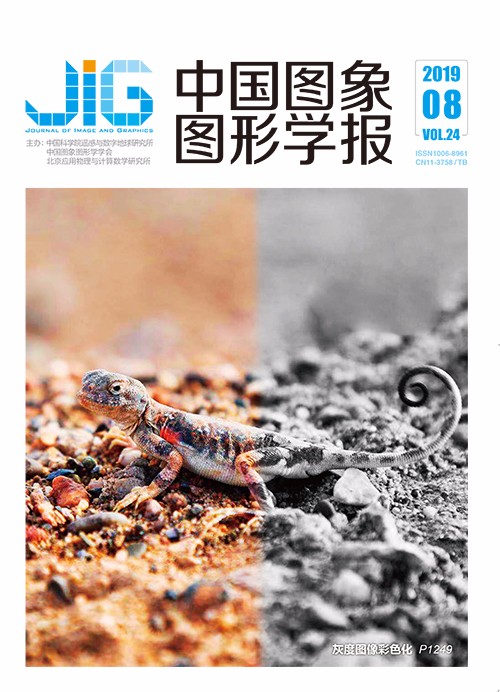
深度卷积神经网络降噪模型的技术瓶颈与研究展望
摘 要
现有的深度卷积神经网络(DCNN)图像降噪模型受其技术路线内在固有特性的制约,降噪性能仍然有待进一步改进。为了推动现有DCNN图像降噪模型技术的发展,需要正视并及时解决制约其进一步完善的瓶颈问题。本文简要概述了传统的基于自然图像非局部自相似性、稀疏性和低秩性这3种先验知识设计的图像降噪算法的技术路线特点和优缺点,从传统图像降噪算法存在的问题中引出基于DCNN构建图像降噪模型的技术优势,并梳理并总结了DCNN降噪模型未来的发展瓶颈,就相应的解决方案(研究方向)进行详细讨论。通过深入分析发现,可以从扩大卷积核的感受野、降低网络参数与训练集之间的依赖关系以及充分利用DCNN网络的建模能力这3个角度入手,突破现有基于数据驱动的DCNN降噪模型的瓶颈制约,把图像降噪算法的研究水平推向新的高度。
关键词
Main bottlenecks and research prospects of the deep convolutional neural network-based denoising model
Xu Shaoping, Liu Tingyun, Lin Zhenyu, Zhang Guizhen, Li Chongxi(School of Information Engineering, Nanchang University, Nanchang 330031, China) Abstract
As a representative technique for deep learning, the deep convolution neural network (DCNN) with strong feature learning and nonlinear mapping ability in the field of digital image processing offers a novel opportunity for image denoising research. DCNN-based denoising models show significant advantages over traditional methods in terms of their denoising effect and execution efficiency. However, most of the existing image denoising models are driven by data. Given their inherent restrictions, the denoising performance of these models can be further improved. To promote the development of existing image denoising technologies, some key challenges that restrict their further improvement must be analyzed and addressed. We first summarize the core ideas of traditional image denoising algorithms based on three types of prior knowledge of the natural image, namely, non-local self-similarity, sparsity, and low rank, and then analyze the advantages and disadvantages of these algorithms. Image denoising algorithms modeled with prior knowledge can flexibly deal with distorted images under different noise levels. Unfortunately, they demonstrate the following limitations:1) the limited hand-crafted image priors are not enough to describe all changes in the image structure, thereby limiting the denoising ability of these algorithms; 2) most of the traditional image denoising algorithms iteratively solve their objective functions, thereby resulting in a high computational complexity; and 3) the optimal solution of the objective function needs to adjust several parameters manually according to the actual situation. Based on the above problems, we point out that the technical advantage of the DCNN-based denoising model lies in its strong nonlinear approximation supported by a graphics processing unit. The inherent characteristics of the DCNN-based denoising model are then analyzed, the bottleneck problems that restrict their future development are presented, and the possible solutions (research directions) to these problems are discussed in detail. A thorough analysis reveals many bottleneck problems in data-driven DCNN-based denoising models that need to be solved, including:1) the small receptive field of the DCNN network that limits the range of image feature representation and the ability to fully utilize the priors contained in natural images; 2) the strong dependence of DCNN-based model parameters on the training dataset, that is, the optimal denoising effect can only be obtained if the distortion level of the observed image is close to that of the training images; and 3) the training set cannot be easily constructed and the denoising model cannot be easily trained to denoise an image if both the noise type and level of noisy image are unknown. To solve these problems, we expand the receptive field of the convolution kernel, weaken the dependency between the network parameters and the training set, or fully utilize the modeling ability of the DCNN network. Therefore, the bottlenecks of the existing DCNN denoising models can be addressed, and research on image denoising algorithms can move to a higher level. In this paper, the technical advantages and development bottlenecks of DCNN in the field of image denoising are summarized, and some future research directions for the image denoising method are proposed. This paper should be of interest to readers in the area of image denoising.
Keywords
review image denoising deep convolutional neural network(DCNN) bottleneck problem receptive field data dependencies parameter space
|



 中国图象图形学报 │ 京ICP备05080539号-4 │ 本系统由
中国图象图形学报 │ 京ICP备05080539号-4 │ 本系统由